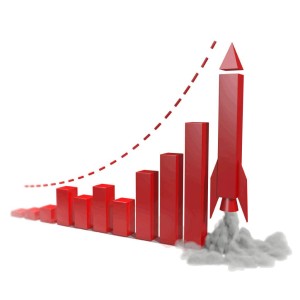
Original Publish Date: September 23, 2015
Update: May 31, 2025
When you’re building (or refreshing) a website in 2025, your ultimate goal is still the same as it was a decade ago: attract real people and get them to take the action you want—whether that’s making a purchase, signing up for a newsletter, requesting a demo, or sharing your content. Traffic alone isn’t enough; you need the right traffic and a user experience that nudges visitors toward conversion. If you’ve been wondering why your site “feels busy” yet doesn’t generate the results you expect, it may be time to invest in modern Conversion Rate Optimization (CRO). Below, you’ll find a concise primer on what CRO looks like today, why it matters for commercial and non-commercial sites alike, and ten signs that indicate you should prioritize it right now.
What Is Conversion Rate (and Why It Still Matters in 2025)
Conversion Rate is simply the percentage of visitors who take a desired action. In 2025, that action could be:
-
E-commerce purchases (for online retailers or DTC brands),
-
Lead captures (contact forms, demo requests, quote requests),
-
Subscription sign-ups (newsletters, memberships, SaaS trials),
-
Content shares (social reposts, referral links, “Read Next” clicks),
-
App installs or feature engagements (for digital products),
-
Donations (for nonprofits or cause-driven pages),
-
Event RSVPs or ticket purchases (for live/virtual events).
Example (2025). Imagine you run a subscription-based meal kit service. In January, you had 10,000 unique visitors from paid search, social ads, and organic search. Of those, 700 people signed up for a subscription, yielding a 7% conversion rate. Your goal for Q2 might be to push that to 9% by improving your homepage, refining your checkout flow, and leveraging real-time personalization.
In 2015, hitting a 10% conversion rate often felt impossible without substantial ad spend or aggressive discounting. Today, AI-driven personalization, mobile-first design, faster page loads, cookie-consent compliance, and advanced analytics mean you can achieve—and often exceed—that 10% benchmark without necessarily doubling your budget.
Why CRO Isn’t Just for Online Stores
Even if you’re not selling products directly, CRO still matters. Let’s say you run:
-
A benchmarking platform that only thrives if enough companies sign up for demos,
-
A news site or blog that monetizes via ad networks but needs high engagement metrics (time on site, scroll depth),
-
A nonprofit organization that needs more email sign-ups or advocacy form completions,
-
A B2B SaaS company where the main KPI is “demo requested,” “trial started,” or “contact sales,”
-
A media channel (podcast, YouTube, live events) that needs people to share links and spread word-of-mouth to attract sponsors.
In all of these cases, more traffic is nice—but if you can’t move that traffic into leads, subscribers, or donors, you’ll struggle to grow. By optimizing how people experience your site—through A/B or multivariate testing, heatmaps, session recordings, AI-powered recommendations, and user surveys—you can boost your conversion percentage significantly. Even a small lift (e.g., 1% → 1.5%) can translate to thousands of dollars (or donated hours) by the end of the year.
Ten Signs You Should Invest in Conversion Rate Optimization (CRO) Today
-
No Social Engagement or Sharing (Beyond Obvious Pushes)
If you’ve simplified your share buttons (e.g., one-click social shares on mobile, native “Share to Stories” for TikTok/Instagram) and content still isn’t organically spreading, that’s a red flag. By 2025, algorithmic fatigue means audiences expect frictionless sharing—embedded quotes, native “Tweet This” lines, and even in-browser link previews. If none of that is working, a CRO audit can help you identify why your headlines, metadata, or calls-to-action aren’t resonating. -
Overwhelming Blocks of Text or Cluttered Layouts
In 2025, mobile rules. Your desktop design may look “professional,” but if users have to pinch-zoom, scroll past 10 ad units, and read through paragraphs of dense copy before seeing a “Buy Now” or “Sign Up” button, they’ll bounce. Modern CRO focuses on scannable content: clear headings, bullet points, strategically placed CTAs, and micro-animations to guide the eye. If you still have “walls of text” or five different “offers” on your homepage, you’re likely turning visitors away rather than guiding them to a single desired action. -
Individuals Are Landing on 404 or Outdated Pages
Broken links still plague business sites in 2025—especially if you migrated from an old CMS. A high percentage of “Page Not Found” or “410 Gone” exits means people never see your key offers. Even worse is when most internal links still point to pre-2020 legacy URLs. If your analytics show visits to pages you know have been decommissioned, it’s time for both a technical SEO cleanup and a usability review. A CRO specialist can help set up redirects, optimize link structures, and ensure that meaningful traffic finds working product pages or landing pages. -
Stagnant or Declining Online Revenue
If your e-commerce or subscription business generated $500K in 2024 but Q1 2025 is flat, it’s not just “market fluctuations.” While seasonal factors matter, a truly stagnant conversion rate—especially if your traffic is stable or growing—often indicates friction in your funnel. Modern shoppers expect one-click checkout, robust user reviews, post-purchase SMS/text updates, and transparent shipping estimates. If you’re still using a multi-step form that reloads on every click, for example, you’re right on the cusp of losing another 20–30% of potential buyers. Investing in CRO can streamline checkout, add SMS/email remarketing, and introduce cart-abandonment pop-ups that recapture lost sales. -
High Bounce Rates (Above 35–50%) Without a Clear Cause
A 45% bounce rate on your homepage in 2015 might have been “okay”—but in 2025, with faster devices and near-instant page loads, visitors expect almost immediate relevance. If your homepage (or any landing page) has a bounce rate between 35–50% or higher, dig deeper:-
Is your value proposition buried?
-
Are you targeting the right keywords in your ads or organic listings?
-
Does the top of page load quickly (Core Web Vitals)?
-
Are there intrusive pop-ups that block initial view?
A dedicated CRO audit can show you which element (headline, imagery, CTA placement) is causing people to “blip out” after just a few seconds.
-
-
Direct Competitors Regularly Outperform You Online
It’s 2025—if your direct competitors consistently appear above you in search results, outrank you on comparison blogs, or run remarketing ads that push your potential customers back toward THEIR cart, they’re siphoning off your share of the market. By monitoring competitor landing pages, funnel flows, promotional tactics, and even creative creatives (via A/B spy tools), you can see exactly why their “Buy Now” button is more appealing. Good CRO will help you craft messaging, build value props, and test layouts so you can match or exceed their performance. -
You Need a One-Off Boost, Not a Permanent Retainer
Many businesses in 2025 prefer a “project-based” engagement over a long-term agency retainer. If you want a 2025 refresh—one-time UX audit, A/B tests, heatmaps, and the first round of optimizations—a CRO specialist can deliver a sprint that fixes the most glaring conversion blockers. After that, you can choose to internalize the lessons or budget for another sprint later. In short, if you’re looking for a cost-effective, one-and-done improvement rather than a perpetual contract, it’s still a sign you should invest in CRO. -
You’re Focusing on Traffic Growth but Ignoring On-Site Behavior
You’ve doubled your ad spend on Meta, TikTok, Google, and Bing. You’re producing short-form videos, hosting webinars, and buying influencer shout-outs. All of that drives more visitors—but if people just bounce, you’re burning cash. Today’s sophisticated analytics (GA4 or equivalent, session-recording tools, full-funnel attribution) let you see engagement metrics: scroll depth, time on CTA sections, drop-off points in forms. If you’re still optimizing for “clicks” rather than “qualified leads” or “purchased carts,” you’ll never know why your shiny new traffic isn’t translating to revenue. -
You Want to Stay Ahead of Emerging Technologies (AI, Voice, AR/VR)
By 2025, early-adopter brands are testing voice commerce (Alexa-driven purchases), AR try-on experiences (virtual furniture placement, makeup previews), and even immersive stores in the metaverse. If you’re considering adding any of these cutting-edge features, you need a CRO partner who understands how to integrate them without compromising overall performance. A voice-search funnel is different from a web form; an AR viewer demands optimized 3D assets and faster load times. If you’re curious about “What if we let people buy through VR?” or “Is chatbot checkout our next move?”—that’s also a sign you should invest in a modern CRO roadmap. -
You’re Planning (or In the Middle Of) a Full Redesign/Migration
Whether you’re moving from a legacy CMS to a headless architecture, switching to a new e-commerce platform, or completely overhauling your brand identity, any major redesign can cause a dip in conversion if not carefully handled. In 2015, many businesses simply “went live” on the new site and lost 20–40% of their revenue overnight because old tracking codes broke, URLs changed, or a CTA got buried. In 2025, a CRO team can run parallel tests on your new design (via feature flags or staging environments) to ensure that once you flip the switch, your conversion graphs keep climbing instead of crashing. That means auditing each new template, monitoring session recordings, and A/B testing critical pages before launch.
Modern CRO Best Practices (2025 Edition)
-
AI-Powered Personalization (But Don’t Overdo It)
In 2025, every platform—from Shopify to custom headless builds—offers built-in AI recommendations (e.g., “People also bought,” “You might like these features”). Use them to surface the right products or content blocks, but A/B test every recommendation widget. Sometimes “popular now” for one segment irritates another. The golden rule: show dynamic content only when it adds contextual value, and always measure its impact on actual conversions (not just clicks). -
Mobile-First, Then Desktop
By now, mobile traffic should be about 65–75% for B2C brands (B2B can still see 50–60% mobile). Ensure your “above-the-fold” (ATR) messaging, CTAs, and button targets are finger-friendly. Lazy-load images, implement a responsive grid, and test on real devices (not just emulators). Slow mobile load times will kill your conversion before anyone even sees your value proposition. -
Privacy and Trust Signals
In 2025, privacy regulations have evolved beyond GDPR and CCPA. It’s now “Privacy by Design” or “Trust-First Commerce.” Show real-time cookie consent banners that let users pick which categories to enable. Add trust badges that reflect 2025 certifications (e.g., “ISO 27701 Certified,” “Zero-Party Data Opt-In”). Customers need to feel safe entering payment details or personal info—especially on mobile. If you can’t demonstrate why you collect data (and how you protect it), you’ll lose that last 15–20% of sign-ups. -
Micro-Interactions and “Frictionless” Forms
Multi-step forms with a progress bar still convert better than a giant one-page form—if each step is optimized. Use intelligent field pre-fill (when the user is logged in), inline validation for errors, and social sign-on (Google, Apple, Microsoft) for B2C or single sign-on (SSO) for B2B. Drop the CAPTCHA if you can—replacing it with email or phone OTP only when suspicious behavior is detected. Small animations (like a button turning green on hover, a subtle shake on error) build confidence without annoyance. -
Data-Driven Experimentation
Abandon gut-feel redesigns. Choose a sample size calculator to estimate how many visitors you need for a valid A/B test. Start with “low-hanging fruit” tests: headlines, hero images, CTA colors (there’s still value in testing whether a green “Buy Now” or orange “Order Now” button performs better—even in 2025). As your testing culture matures, move to deeper tests: complete landing-page variations, integration of micro-animations, or how a chatbot launch modal vs. a top-bar banner influences engagement. -
Holistic Funnel Analysis
It’s not enough to optimize individual pages. Use full-funnel attribution (data across ad clicks, organic, email, social) and create a “lookback window” of at least 30–45 days (to capture subscription renewals, repeat purchases, or extended B2B sales cycles). If you’ve been measuring “last-click” conversions, you’re missing how people discover you on TikTok, return via email, and then convert on a direct search. A CRO specialist can stitch together these touchpoints in tools like GA4 (or its 2026 upgrade), Mixpanel, or an in-house CDP. -
Accessibility as a Growth Lever
WCAG 2.2 is the baseline in 2025. If your site isn’t fully keyboard-navigable, screen-reader friendly, and has sufficient color contrast (4.5:1 for text, 3:1 for large-scale UI), you’re alienating a significant portion of users—especially on mobile. Accessibility issues can directly reduce conversions (people can’t find or complete forms). Many CRO audits now include automated accessibility scans plus manual reviews. When you improve accessibility, you often see a 5–10% lift in conversions from segments you never addressed before. -
Experiment With Emerging Channels, But Keep the Core Clean
Voice-search funnels (e.g., “Hey Siri, find me running shoes under $100”) or QR-code re-engagement campaigns (posters with dynamic QR codes that drop you into a personalized landing page) can provide an edge—but only if the core site works flawlessly. Use short-term CRO engagements to test these, measure ROI, and decide if you roll them into your long-term strategy. -
Continuous Monitoring & Real-Time Alerts
Set up dashboards that watch key metrics: global conversion rate, micro-conversion rates (e.g., “Add to Cart,” “Initiate Checkout,” “Complete Checkout”), cart abandonment, click-to-form-submit ratio. If something spikes or crashes (e.g., a 20% drop in “Start Free Trial” clicks overnight), you want to know within hours—not weeks. By 2025, advanced CRO platforms can trigger Slack alerts, SMS, or email when anomalies occur. -
Culture of Optimization
The most successful brands in 2025 (think Shopify Plus merchants, direct-to-avatar NFT marketplaces, fast-growing SaaS unicorns) embed CRO into their quarterly planning. They allocate at least 5–10% of their traffic to “always-on” experiments, they conduct weekly standups to review test results, and they celebrate “wins” when a small change—like reordering form fields—drives 4% more revenue. If your team still treats website updates as “once a year” tasks, you’re leaving serious money on the table.
Bringing It All Together
Investing in CRO in 2025 isn’t just about tweaking your button colors or writing another “urgent” headline. It’s about embracing a mindset of continuous improvement, leveraging AI-powered insights, staying compliant with evolving privacy regulations, and ensuring a seamless, device-agnostic experience for every visitor.
-
For e-commerce sites: a frictionless checkout, dynamic product recommendations, and headless-powered micro-animations can boost average order value (AOV) and reduce cart abandonment.
-
For SaaS/B2B: optimizing demo requests, free-trial activations, and in-app onboarding flows are crucial—especially given the longer, multi-stakeholder sales cycles.
-
For publishers, nonprofits, and content-first sites: increasing time-on-page, lowering scroll-abandonment, and encouraging social sharing or email captures are the priorities.
If you recognize any of the ten signs above in your current setup—whether it’s unoptimized mobile pages, high bounce rates, competitors eating your lunch, or a site redesign looming on the horizon—now’s the time to act. Even a small uptick in your conversion rate (e.g., from 4% to 5%) can translate to tremendous bottom-line impact in 2025’s competitive landscape.
Investing in CRO will not only elevate your immediate results but also create a data-driven, customer-centric culture that keeps you agile and profitable long after this calendar year. Choose a partner or build an internal team that understands modern CRO tools—heatmaps, session-recordings, AI personalization, privacy compliance, and continuous experimentation—and you’ll see tangible improvements in your KPIs within weeks, not months.
In short: if any of these situations resonate, it’s time to invest in conversion rate optimization. The internet is only getting faster, smarter, and more selective—make sure your site isn’t left behind.
About The Author
Dave Burnett
I help people make more money online.
Over the years I’ve had lots of fun working with thousands of brands and helping them distribute millions of promotional products and implement multinational rewards and incentive programs.
Now I’m helping great marketers turn their products and services into sustainable online businesses.
How can I help you?




